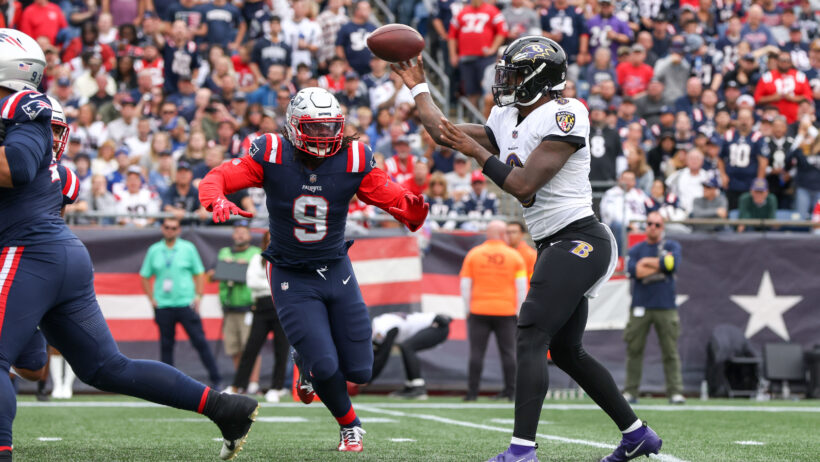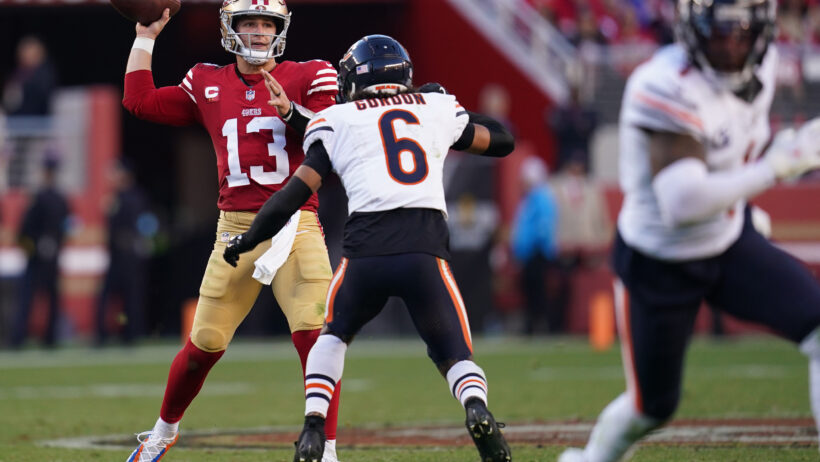What Are Pace Stats in the NBA?

NBA pace factor is an advanced basketball statistic every serious sports bettor needs to know.
When it comes to basketball betting, a lot of sports bettors understand stats like points-per-game, rebounds, and assists, but as we’ve come to learn, these standard statistics do not always paint a complete picture.
One advanced stat that helps round out a team’s profile is Pace Factor, which refers to how many possessions a team uses per game. Let’s take a closer look at this stat and explain why it’s useful to sports bettors.
What Are NBA Pace Stats?
The first question you might have about Pace Factor is how is it calculated and why is it useful? The answer is best illustrated with an example. Let’s say we have two teams that score 110 points per game.
On the surface, they might seem like equals.
However, what if one team scores 110 points per game but their contests only have an average of 95 combined possessions while the other scores 110 points but their matchups average 120 possessions? The first team clearly tends to score more points per possession.
Beyond that, consider what the number of possessions means. If one game features 120 possessions whereas another game has just 95, that speaks to the amount of opportunities each team is getting to score points. We could talk about efficiency, but in general, having more opportunities to score can and should lead to higher point totals.
That’s what Pace Factor is all about. Specifically, this advanced metric tells bettors how many combined possessions a team averages per 48 minutes (per game). In other words, if a team has a Pace Factor of 100, that means their games typically see 100 possessions in total (both sides). With so many different styles of offense being played, this gives us a picture of the style of the team.
Keep in mind that Pace Factor can also be calculated for a player. This will give you a peek into how many opportunities a player gets per game. Such stats are more relevant to DFS players than bettors, for the most part.
Where Can NBA Pace Factor Stats Be Found?
Although it used to be tricky to find Pace stats, now it’s pretty easy. You can visit mainstream media sites like ESPN.com or NBA.com to easily see the numbers.
If you’re looking for the formula, it’s available on several websites like Basketball Reference, but we’ll show it to you here below:

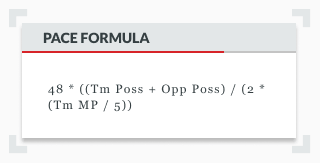
Keep in mind that Pace is based on 48 minutes of action.
Why Has Pace Become Relevant?
We touched upon this a little bit in previous sections but we’ll dive a little deeper into it now.
There are many different coaching styles and offenses run by NBA teams. When it comes to college basketball, we see an even greater diversity of systems because there are more teams and more schemes.
So, let’s take a look at a team like the Syracuse Orange, who under head coach Jim Boeheim loves to play their patented two-three zone on defense. They typically turn games into a complete slog, making teams claw and scratch for every point.
Opponents must dribble the ball up the court, try and find a way to break down the zone and then aim for some points. On offense, Syracuse plays similarly, inching their way up the court in methodical fashion. That’s why the Orange, at last check, were 294th in the nation in Pace Factor at 68.9. This gives you a clear picture of the style of game you’ll see if you turned on the TV.
Now let’s take a team like Duke or North Carolina, for example. Typically, they’re loaded with athletic marvels that can run-and-gun with the best of them. They have sharpshooters on the wings, guards who can slash to the basket and big men who can post-up in the paint.
These characteristics afford them the opportunity to play at a much higher pace – if they so choose – because they’re more adept at playing in a high-scoring, back-and-forth game. 2020 is a bit of a down year for their Pace numbers but looking back to 2018-19, North Carolina was seventh in the nation with a Pace of 77.6. That shows you just how different of a style they plan than Syracuse.
Note that both teams are widely successful despite the huge difference in the Pace Factor.
In the NBA, you won’t see as huge of a variation from fastest to slowest, but Pace Factor still gives you a clear idea of what style each team plays. That means that if you didn’t know much about the team, the coaching style or their strategy to start with, you’ll now have a better idea of how they play just by looking at this stat.
Why Are Pace Stats Useful to Sports Betting?
Pace Factor is one of the more important advanced stats when it comes to basketball because it’s a great indicator of whether a game will go over or under the number. There are a lot of things you can look at when handicapping a total and Pace Factor should be one of the stats you incorporate.
Let’s say we’re looking at the Pace Factor from four separate teams:
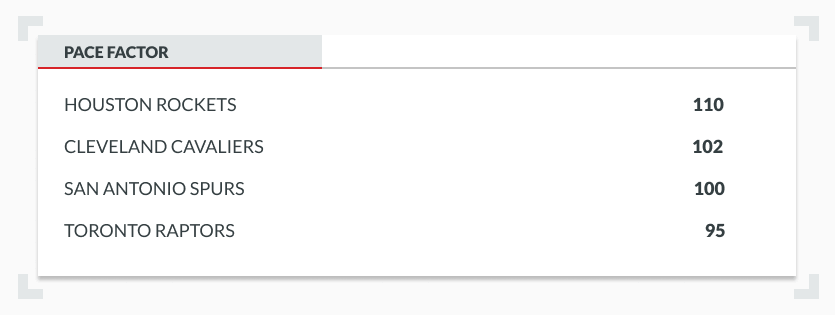
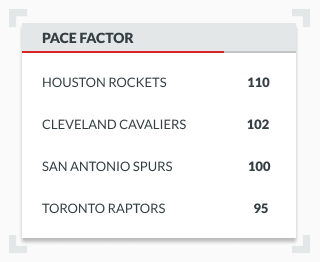
What we see here is that Rockets games typically have tons of possessions, which means for whatever reason, there is a lot of back-and-forth in their games and lots of opportunities to score for both sides. However, Toronto is at the other end of the spectrum as Raptors games feature 15 less possessions.
Well, let’s do a little bit of math. If Rockets games are seeing 15 more possessions and teams score 50% of their baskets, that means Rockets games are likely to see 15 more points per game.
Now the other key to handicapping these games is to think about the matchup. If the Rockets face the Raptors, who will dictate the pace? Will the Rockets make Toronto play fast or will the Raptors slow the Rockets down?
What you’ll want to do is to get a feel for these numbers and cross-reference them with totals. If the Raptors play the San Antonio Spurs, in your mind, you should be expecting to see a low number on the board. If you see a high total, the Pace stats could trigger an under play for you. Same if you see two teams that play lots of possessions. You may want to hit the over if you see a low number.
Pace Factor can also help with handicapping spreads. For example, if the Rockets are a two-point favorite over the Raptors but you’ve seen Toronto play fast teams this season and they’ve struggled in those games, you know the Rockets might have that edge. Or if you have evidence of the opposite, then you might see value with the Raptors.
Using NBA Pace Factor for Betting
Now that you have a better understanding of Pace Factor, hopefully you’ll incorporate it into your day-to-day basketball handicapping. This can be especially effective if you have a sportsbook bonus in hand, like the ESPN BET promo code for new customers.
If you’d like to read more of these types of how-to articles, check out the entire section right here.

Evergreen Manager; Sportsbook Expert
Following a sports journalism career with his work appearing in outlets like theScore, The Province, and VICE Sports, Patrick moved into the world of content marketing to bridge the gap between great writing and SEO success. He’s brought that same mindset to lead evergreen content efforts at SBD.

